Xuanang Chen
DeepSolution: Boosting Complex Engineering Solution Design via Tree-based Exploration and Bi-point Thinking
Feb 28, 2025Abstract:Designing solutions for complex engineering challenges is crucial in human production activities. However, previous research in the retrieval-augmented generation (RAG) field has not sufficiently addressed tasks related to the design of complex engineering solutions. To fill this gap, we introduce a new benchmark, SolutionBench, to evaluate a system's ability to generate complete and feasible solutions for engineering problems with multiple complex constraints. To further advance the design of complex engineering solutions, we propose a novel system, SolutionRAG, that leverages the tree-based exploration and bi-point thinking mechanism to generate reliable solutions. Extensive experimental results demonstrate that SolutionRAG achieves state-of-the-art (SOTA) performance on the SolutionBench, highlighting its potential to enhance the automation and reliability of complex engineering solution design in real-world applications.
StructRAG: Boosting Knowledge Intensive Reasoning of LLMs via Inference-time Hybrid Information Structurization
Oct 11, 2024



Abstract:Retrieval-augmented generation (RAG) is a key means to effectively enhance large language models (LLMs) in many knowledge-based tasks. However, existing RAG methods struggle with knowledge-intensive reasoning tasks, because useful information required to these tasks are badly scattered. This characteristic makes it difficult for existing RAG methods to accurately identify key information and perform global reasoning with such noisy augmentation. In this paper, motivated by the cognitive theories that humans convert raw information into various structured knowledge when tackling knowledge-intensive reasoning, we proposes a new framework, StructRAG, which can identify the optimal structure type for the task at hand, reconstruct original documents into this structured format, and infer answers based on the resulting structure. Extensive experiments across various knowledge-intensive tasks show that StructRAG achieves state-of-the-art performance, particularly excelling in challenging scenarios, demonstrating its potential as an effective solution for enhancing LLMs in complex real-world applications.
Seg2Act: Global Context-aware Action Generation for Document Logical Structuring
Oct 09, 2024



Abstract:Document logical structuring aims to extract the underlying hierarchical structure of documents, which is crucial for document intelligence. Traditional approaches often fall short in handling the complexity and the variability of lengthy documents. To address these issues, we introduce Seg2Act, an end-to-end, generation-based method for document logical structuring, revisiting logical structure extraction as an action generation task. Specifically, given the text segments of a document, Seg2Act iteratively generates the action sequence via a global context-aware generative model, and simultaneously updates its global context and current logical structure based on the generated actions. Experiments on ChCatExt and HierDoc datasets demonstrate the superior performance of Seg2Act in both supervised and transfer learning settings.
READoc: A Unified Benchmark for Realistic Document Structured Extraction
Sep 08, 2024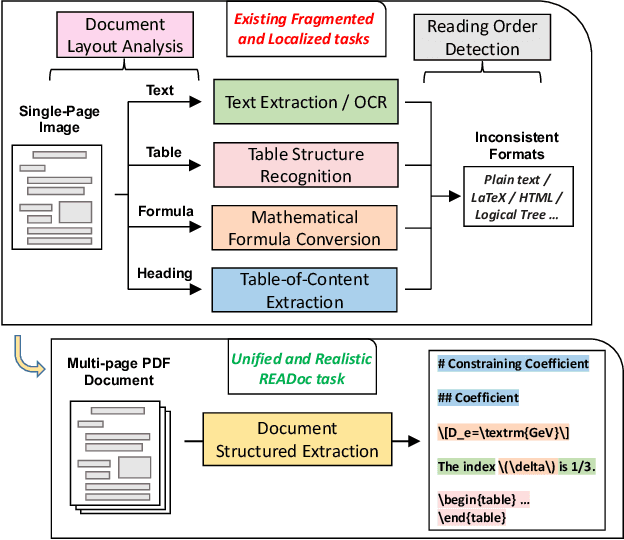



Abstract:Document Structured Extraction (DSE) aims to extract structured content from raw documents. Despite the emergence of numerous DSE systems, their unified evaluation remains inadequate, significantly hindering the field's advancement. This problem is largely attributed to existing benchmark paradigms, which exhibit fragmented and localized characteristics. To address these limitations and offer a thorough evaluation of DSE systems, we introduce a novel benchmark named READoc, which defines DSE as a realistic task of converting unstructured PDFs into semantically rich Markdown. The READoc dataset is derived from 2,233 diverse and real-world documents from arXiv and GitHub. In addition, we develop a DSE Evaluation S$^3$uite comprising Standardization, Segmentation and Scoring modules, to conduct a unified evaluation of state-of-the-art DSE approaches. By evaluating a range of pipeline tools, expert visual models, and general VLMs, we identify the gap between current work and the unified, realistic DSE objective for the first time. We aspire that READoc will catalyze future research in DSE, fostering more comprehensive and practical solutions.
Offline Pseudo Relevance Feedback for Efficient and Effective Single-pass Dense Retrieval
Aug 20, 2023


Abstract:Dense retrieval has made significant advancements in information retrieval (IR) by achieving high levels of effectiveness while maintaining online efficiency during a single-pass retrieval process. However, the application of pseudo relevance feedback (PRF) to further enhance retrieval effectiveness results in a doubling of online latency. To address this challenge, this paper presents a single-pass dense retrieval framework that shifts the PRF process offline through the utilization of pre-generated pseudo-queries. As a result, online retrieval is reduced to a single matching with the pseudo-queries, hence providing faster online retrieval. The effectiveness of the proposed approach is evaluated on the standard TREC DL and HARD datasets, and the results demonstrate its promise. Our code is openly available at https://github.com/Rosenberg37/OPRF.
Defense of Adversarial Ranking Attack in Text Retrieval: Benchmark and Baseline via Detection
Jul 31, 2023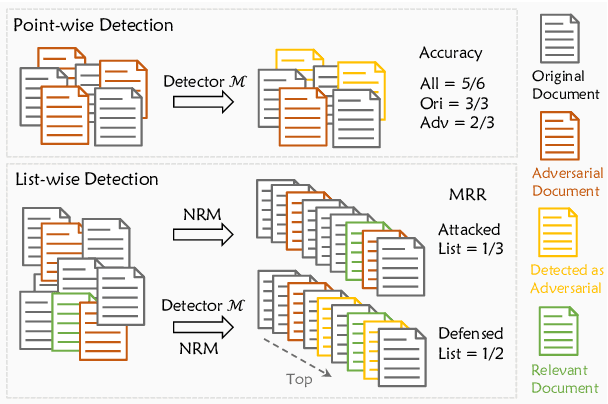
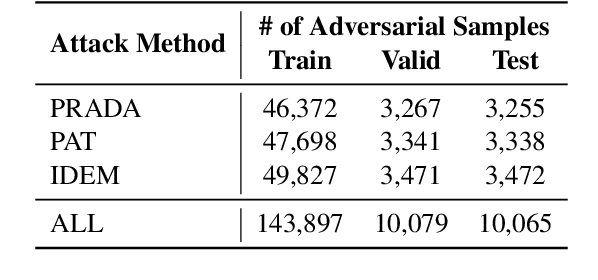
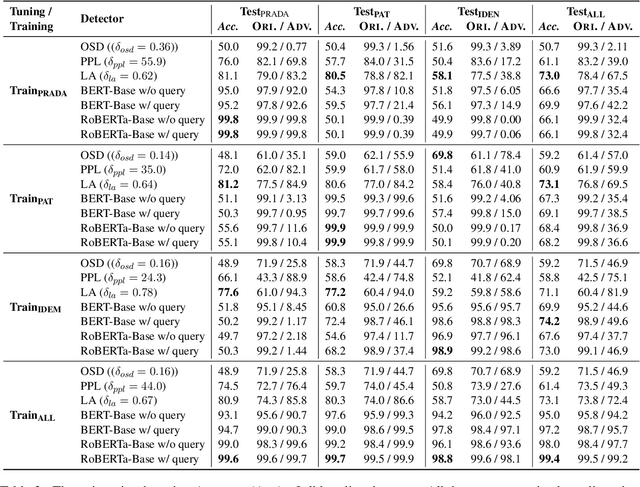
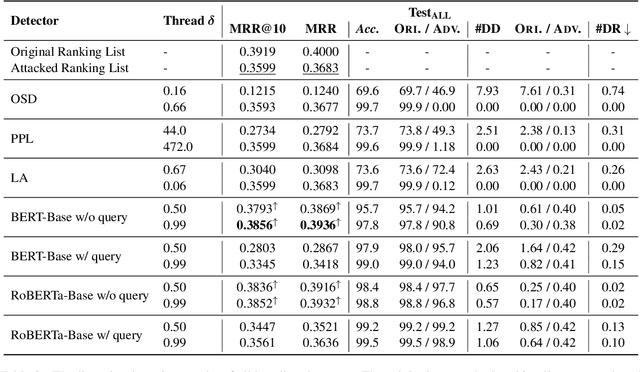
Abstract:Neural ranking models (NRMs) have undergone significant development and have become integral components of information retrieval (IR) systems. Unfortunately, recent research has unveiled the vulnerability of NRMs to adversarial document manipulations, potentially exploited by malicious search engine optimization practitioners. While progress in adversarial attack strategies aids in identifying the potential weaknesses of NRMs before their deployment, the defensive measures against such attacks, like the detection of adversarial documents, remain inadequately explored. To mitigate this gap, this paper establishes a benchmark dataset to facilitate the investigation of adversarial ranking defense and introduces two types of detection tasks for adversarial documents. A comprehensive investigation of the performance of several detection baselines is conducted, which involve examining the spamicity, perplexity, and linguistic acceptability, and utilizing supervised classifiers. Experimental results demonstrate that a supervised classifier can effectively mitigate known attacks, but it performs poorly against unseen attacks. Furthermore, such classifier should avoid using query text to prevent learning the classification on relevance, as it might lead to the inadvertent discarding of relevant documents.
Towards Imperceptible Document Manipulations against Neural Ranking Models
May 03, 2023



Abstract:Adversarial attacks have gained traction in order to identify potential vulnerabilities in neural ranking models (NRMs), but current attack methods often introduce grammatical errors, nonsensical expressions, or incoherent text fragments, which can be easily detected. Additionally, current methods rely heavily on the use of a well-imitated surrogate NRM to guarantee the attack effect, which makes them difficult to use in practice. To address these issues, we propose a framework called Imperceptible DocumEnt Manipulation (IDEM) to produce adversarial documents that are less noticeable to both algorithms and humans. IDEM instructs a well-established generative language model, such as BART, to generate connection sentences without introducing easy-to-detect errors, and employs a separate position-wise merging strategy to balance relevance and coherence of the perturbed text. Experimental results on the popular MS MARCO benchmark demonstrate that IDEM can outperform strong baselines while preserving fluency and correctness of the target documents as evidenced by automatic and human evaluations. Furthermore, the separation of adversarial text generation from the surrogate NRM makes IDEM more robust and less affected by the quality of the surrogate NRM.
Re-thinking Knowledge Graph Completion Evaluation from an Information Retrieval Perspective
May 09, 2022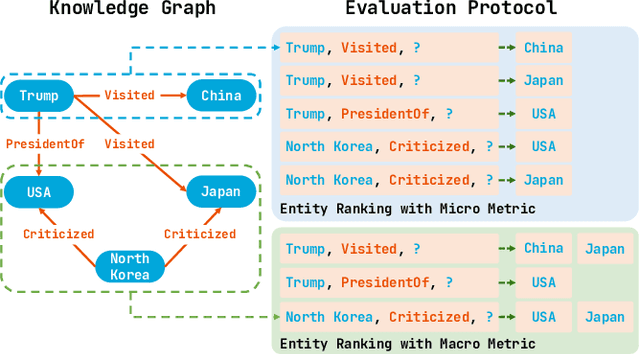

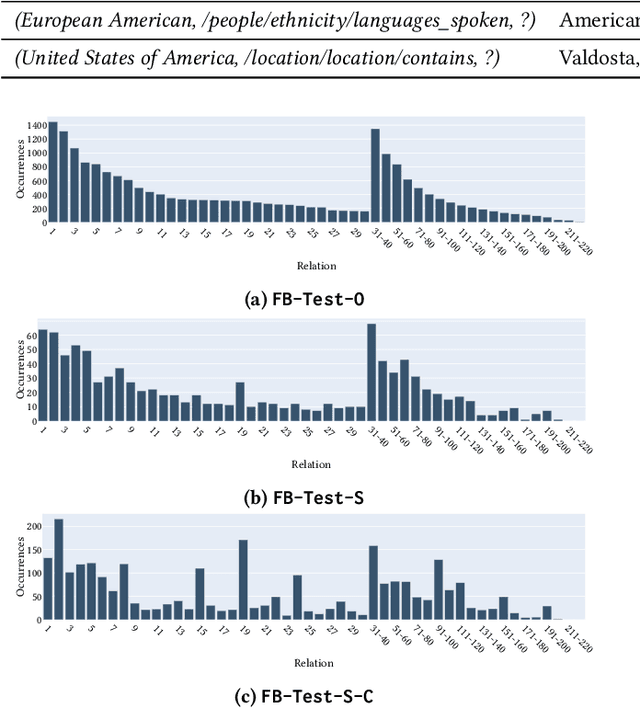

Abstract:Knowledge graph completion (KGC) aims to infer missing knowledge triples based on known facts in a knowledge graph. Current KGC research mostly follows an entity ranking protocol, wherein the effectiveness is measured by the predicted rank of a masked entity in a test triple. The overall performance is then given by a micro(-average) metric over all individual answer entities. Due to the incomplete nature of the large-scale knowledge bases, such an entity ranking setting is likely affected by unlabelled top-ranked positive examples, raising questions on whether the current evaluation protocol is sufficient to guarantee a fair comparison of KGC systems. To this end, this paper presents a systematic study on whether and how the label sparsity affects the current KGC evaluation with the popular micro metrics. Specifically, inspired by the TREC paradigm for large-scale information retrieval (IR) experimentation, we create a relatively "complete" judgment set based on a sample from the popular FB15k-237 dataset following the TREC pooling method. According to our analysis, it comes as a surprise that switching from the original labels to our "complete" labels results in a drastic change of system ranking of a variety of 13 popular KGC models in terms of micro metrics. Further investigation indicates that the IR-like macro(-average) metrics are more stable and discriminative under different settings, meanwhile, less affected by label sparsity. Thus, for KGC evaluation, we recommend conducting TREC-style pooling to balance between human efforts and label completeness, and reporting also the IR-like macro metrics to reflect the ranking nature of the KGC task.
 Add to Chrome
Add to Chrome Add to Firefox
Add to Firefox Add to Edge
Add to Edge